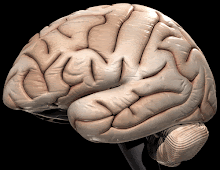Hairs are the appendages of the skin generated from the epidermal layer. Hair is made up of Keratin, a highly insoluble and mechanically stable fibrous protein. This Keratin is not only found in hairs but also in the skin. Actually Keratin is produced from the Keratinisation zone of the epidermis, which is the outer most layer of the skin. In the skin it provides water proofing quality.
The Keratin is generally pigmented. It is intensively pigmented in the hair. The dark black colour of the hair is due to the presence of high concentration of melanin pigments in it. The skin colour is also due to the presence of this pigment in the keratinocytes.
The Keratin gets its melanin pigments from melanocytes, which are found in the inner layer of the epidermis, which is found just beneath the keratinizing layer. The melanocytes have lond processes which extent between and under the cells of the epidermis. The melanin granules formed in the melanocytes pass along their branches and are secreted at their tips. The granules are subsequently engulfed by the keratinocytes, which make up 90 percent of the epidermal cells.
Melanin is a protein like polymer of the amino acid tyrocin. In its biosynthesis tyrocin is converted in to dihydroxy phenyl alanine (DHPA) by oxidative enzymes amongst which tyrocin is particularly important. Then a series of reactions take place during which polymerisaton occurs to form the final melanoprotein.
The hair grows only from the keratinocytes of the germinal matrix of the hair follicle. This germinal matrix lies in the proximal enlargement of the root hair, called the hair bulb. The hair shaft, which projects from the surface, consists of an inner medulla, an intermediate cortex and an outer cuticle. All these parts are made up of cornified cells.
The medulla is composed of polyhedral cells; the cortex consists of elongated cells with inner lumen. These cells are united to form flattened fusiform fibers. The lumens of these cells contain pigmented granules in dark hair and air space in white hair.
The development of white hairs because of the absence of melanin pigments, may be due to the absence of one or more enzymes, necessary for the DHPA path way. It will lead to the failure of melanin accumulation in the keratinocytes, found in the hair bulb, from which hair is growing.
Usually such physiological disorder occurs in the old age, which results in the growing of gray and white hairs in the body.
The Keratin is generally pigmented. It is intensively pigmented in the hair. The dark black colour of the hair is due to the presence of high concentration of melanin pigments in it. The skin colour is also due to the presence of this pigment in the keratinocytes.
The Keratin gets its melanin pigments from melanocytes, which are found in the inner layer of the epidermis, which is found just beneath the keratinizing layer. The melanocytes have lond processes which extent between and under the cells of the epidermis. The melanin granules formed in the melanocytes pass along their branches and are secreted at their tips. The granules are subsequently engulfed by the keratinocytes, which make up 90 percent of the epidermal cells.
Melanin is a protein like polymer of the amino acid tyrocin. In its biosynthesis tyrocin is converted in to dihydroxy phenyl alanine (DHPA) by oxidative enzymes amongst which tyrocin is particularly important. Then a series of reactions take place during which polymerisaton occurs to form the final melanoprotein.
The hair grows only from the keratinocytes of the germinal matrix of the hair follicle. This germinal matrix lies in the proximal enlargement of the root hair, called the hair bulb. The hair shaft, which projects from the surface, consists of an inner medulla, an intermediate cortex and an outer cuticle. All these parts are made up of cornified cells.
The medulla is composed of polyhedral cells; the cortex consists of elongated cells with inner lumen. These cells are united to form flattened fusiform fibers. The lumens of these cells contain pigmented granules in dark hair and air space in white hair.
The development of white hairs because of the absence of melanin pigments, may be due to the absence of one or more enzymes, necessary for the DHPA path way. It will lead to the failure of melanin accumulation in the keratinocytes, found in the hair bulb, from which hair is growing.
Usually such physiological disorder occurs in the old age, which results in the growing of gray and white hairs in the body.
